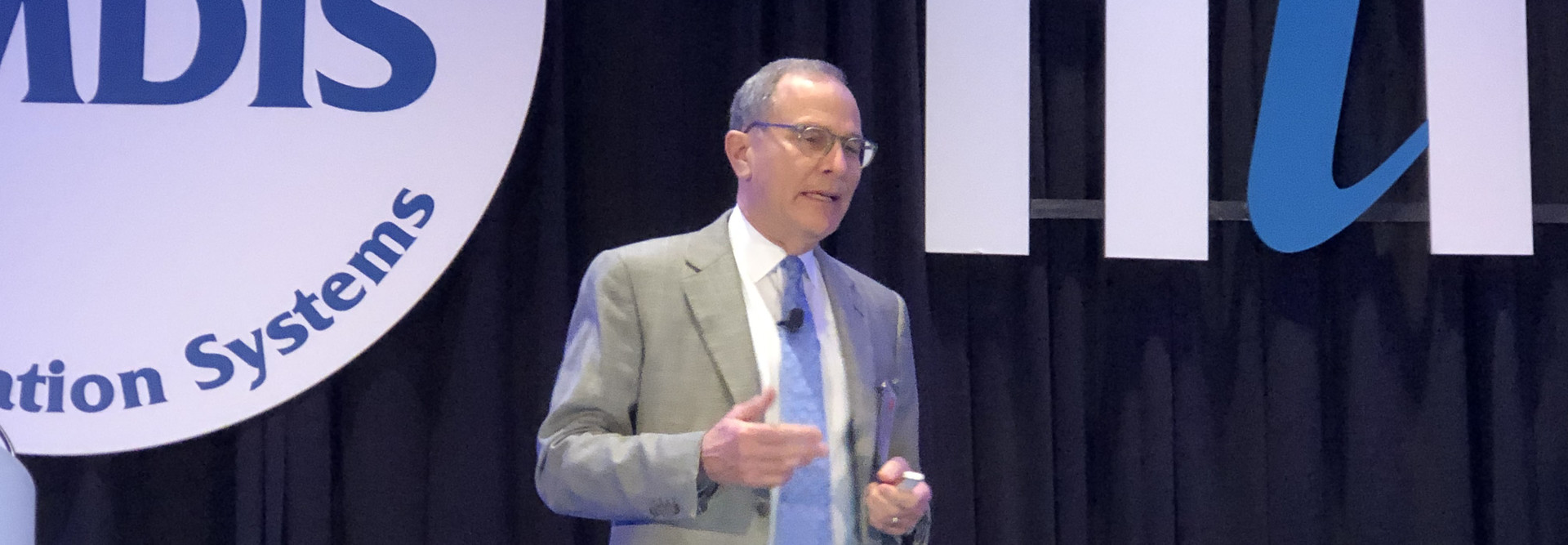HIMSS 2019: 3 Takeaways from Orlando
The healthcare technology landscape is in a state of flux, with a growing focus on trying to improve consumers’ overall experiences, notably their access to data.
That was one of many themes discussed by attendees at HIMSS19 in Orlando, Fla., spurred in part by an announcement prior to the start of the show of a proposed rule from the Office of the National Coordinator for Health IT that aims to boost information access and halt data blocking by providers and vendors.
“We’re really talking about how to create the pull, how consumers are going to drive this marketplace,” said Dr. Karen DeSalvo during the event’s opening keynote session. De Salvo, a former National Coordinator for Health IT, is currently a professor at the University of Texas at Austin, Dell Medical School.
Here are three other takeaways from the week that was at HIMSS19.
1. Healthcare Innovation Requires Holistic Execution
For organizations to innovate, technology is key, but broadly examining the environment and developing holistic strategies for adoption and engagement are just as important. Dr. Richard Milani, chief clinical transformation officer at Ochsner Health System in New Orleans, said that four social determinants — health literacy, medication affordability, social isolation and patient activation level — stand out as the biggest drivers for care. Ochsner uses smartphones, smartwatches, tablets and other connected devices to provide treatment to many of its chronic-disease patients.
“It’s far more important to know what person the disease has than what disease the person has,” Milani said, quoting Hippocrates. “Where we are today is clearly now driving toward data. Where things obviously are going to head is around a more personalized version of care where we can direct therapies specifically to individuals, and that’s where social determinants play a big role.”
For instance, how he intervenes with a hypertensive male who lives alone and has low activation or low health literacy, Milani said, is entirely different than how he would approach a male with similar symptoms who has a spouse and a higher level of literacy or activation.
“It’s totally personalizing and driving how we manage our patients,” he said.
Meanwhile, Jewish Senior Living Group COO Michael Skaff talked about the importance of focusing on the “why” of a digital transformation effort, more than the “what” or the “how.”
“Look at the structural elements of what drives organizational change,” he said. “It doesn’t matter what the tools are — they could be digital, they could be process, they could be financial, they could be a lot of different things — what matters are the core elements of change.”
MORE FROM HEALTHTECH: Check out all of our stories and videos from HIMSS19.
2. Don’t Take Security Awareness for Granted
Halifax Health Vice President and CIO Tom Stafford described the fight to maintain a cybersecurity war footing, but specifically pointed out the success he’s had with educating his staff.
Stafford said the click rate for his staff on phishing emails is around 1 to 2 percent, a figure he chalked up to constant training that takes a personalized approach.
“We always try to focus on the personal side, and it seems to stick better,” Stafford said. “Our best deterrent is the end user, hands down, based on the current environment.”
Karl West, CISO at Intermountain Healthcare in Salt Lake City, discussed why organizations must secure their clinically integrated supply chains, stressing the importance of developing an accurate data inventory.
“I partner right with our supply chain organizations and say, ‘Don’t let anything come in through the alternative sources,’” West said. “I invite the auditors in our organization to go and audit our supply chain. I want to help them. I want to find out who’s not following the process. Let’s identify it and eliminate it. That way, we can keep this an accurate data inventory.”
JOIN THE CONVERSATION: Follow @CDW_Healthcare on Twitter for continued HIMSS19 coverage.
3. Telehealth Will Evolve as Reimbursement Models Change
During a discussion with CDW’s Ginna Baik, Dr. Bob Monteverdi, global healthcare solutions leader for Lenovo, talked about the growth of telehealth, saying that the definition continues to evolve as the landscape and use cases expand.
“What used to be just, ‘how do we care for someone who’s not here in our facility’ is continuing to grow, despite the fact that virtual care is a relatively new technology,” he said. “The definition just keeps growing very, very rapidly.”
Baik observed that the new Current Procedural Terminology codes for telehealth from the Centers for Medicare & Medicaid Services that apply to chronic remote patient monitoring and virtual check-ins will help telehealth expansion.
That dovetails with sentiments expressed during the conference by Shawn Valenta, administrator of telehealth for the Medical University of South Carolina, who also said that if telehealth technologies are being used to simply replicate the current broken system, that’s a failing approach.
“It needs to generate more efficiencies,” he said. “It needs to add value to care over a continuum.”
Valenta added that he’s optimistic about the new reimbursement codes.
“There’s been a lot of federal movement in the last year or so, which has been nice; there have been a lot of barriers,” he said.
Dr. Eduardo Vadia, managing partner and co-founder of Access Physicians, said during another discussion on telehealth that he expects interest and adoption of telemedicine to hit critical mass over the next two years.
“We’re going to see an opportunity to realize a lot of the clinical and financial outcomes at the enterprise level with our clients in 2019 and 2020.”
Keep this page bookmarked for articles from the event. Follow us on Twitter @CDW_Healthcare, as well as the official organization account, @HIMSS, and join the conversation using hashtags including #CDWHIMSS and #HIMSS19.










